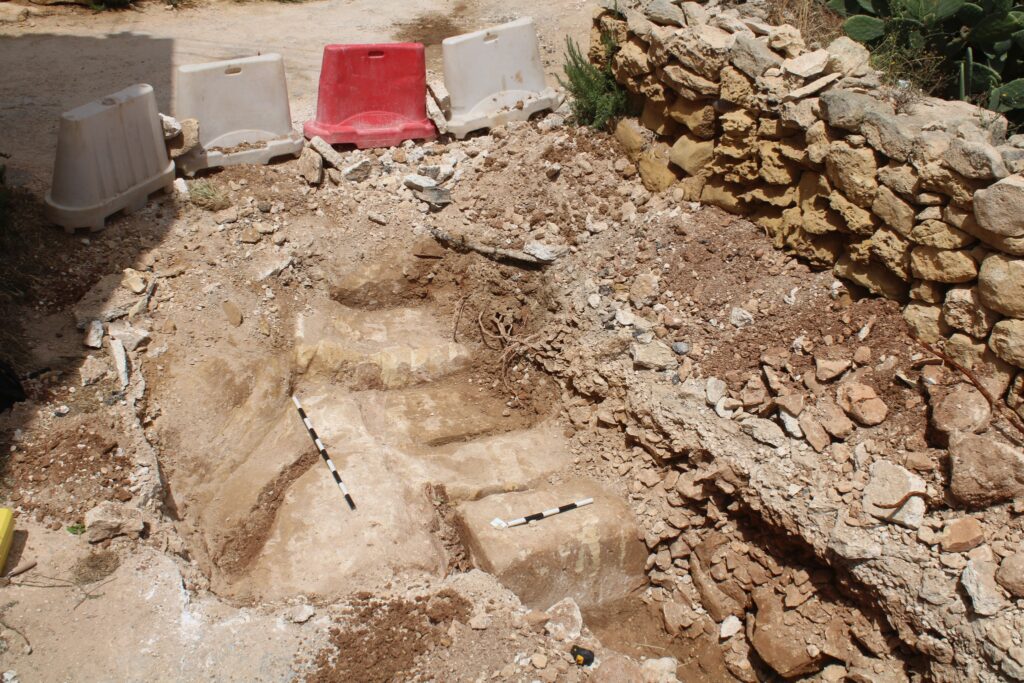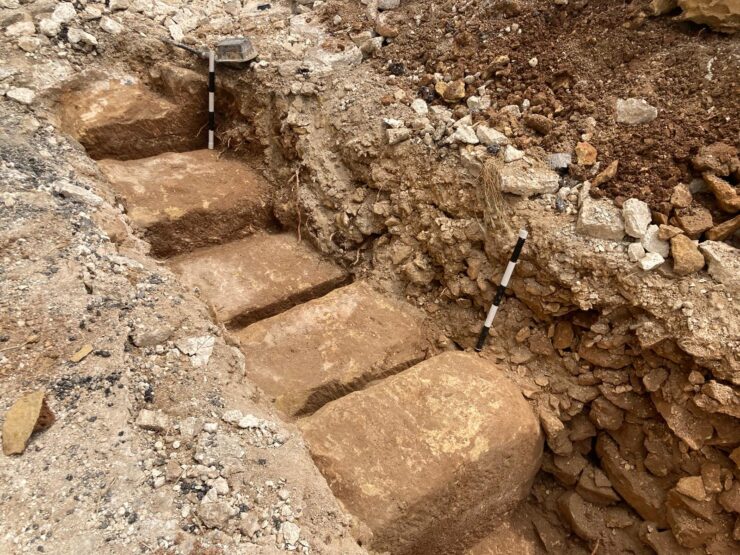Ditching works have started to be carried out by the Water Services Company in the Żejtun / Marsaxlokk area. However, an authorized archaeologist of the Superintendence of Cultural Heritage was keeping an eye on the area, which has a high prevalence of known archaeological sites that have been recorded.
According to the statement, the archaeological monitor was immediately alerted when rock-cut surfaces with visible tool marks were uncovered during construction.
It turned out to be an old quarry with large cut stones (large rectangular stone blocks) hewn out of the rock and not yet separated from the bedrock. The Inspectorate then issued instructions for the proper investigation of this feature.
According to the statement, no associated material was found and no definite date could be assigned. However, based on the cut stones and the typology of the ancient quarry, the discovery can be safely dated to the classical period. Superintendence of Cultural Heritage posted the discovery on Facebook.



Żejtun is a city in the South-Eastern Region of Malta. Żejtun is an important island centre, contributing significantly to the history, arts and commerce of the islands. Bulebel, one of the country’s main industrial estates, is located on the borders of this city.
Marsaxlokk is a small, traditional fishing village in Żejtun. It has a harbour and is a tourist centre known for its scenery, fishermen and history. Marsaxlokk has been inhabited since ancient times and is well known as a harbour used as a port by the Phoenicians and Carthaginians, and also has the remains of a harbour from Roman times. This fishing village became a separate district in the late nineteenth century.
The earliest known settlement is Tas-Silġ, a rounded hill close to the town of Żejtun overlooking the Marsaxlokk Bay. It is a large multi-period sanctuary with archaeological remains spanning four millennia, from the Neolithic period to the ninth century AD. The site includes a temple complex dating from the early 3rd millennium BC. In Roman times, the site became an international religious complex dedicated to the goddess Juno. The site was mentioned by the orator Cicero in the 1st century BC because of its location on the main maritime trade routes.
